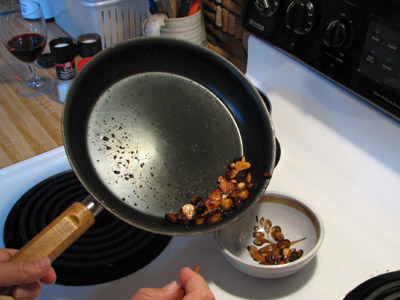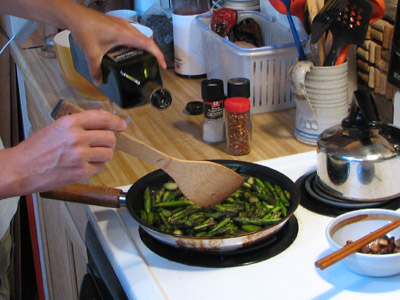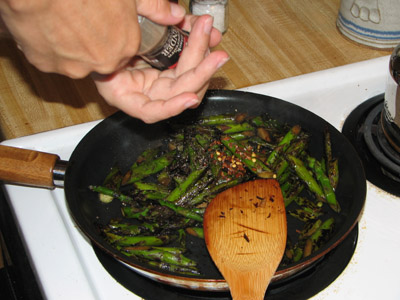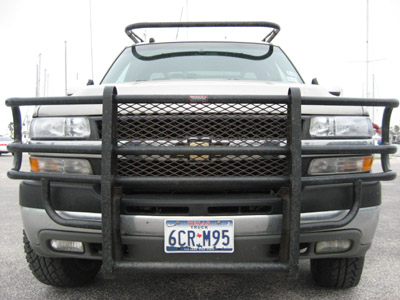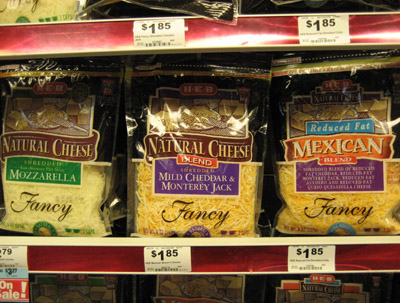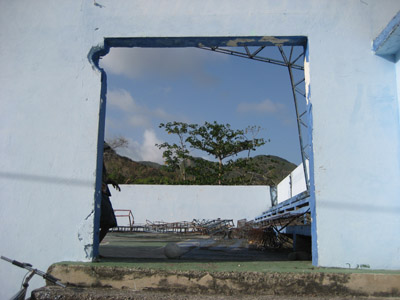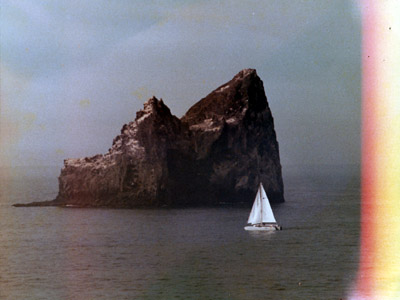Our choices were to stay in Alacran until the weather reports grew more favorable—and this was looking like it might take upwards of several years—or just take off immediately and get the crossing over with, hoping the weather did not deteriorate. The thought that we might conceivably run out of limes if we waited around was keeping me up at night and, although that might easily be remedied by heading back to the mainland for a more serious grocery run, I am adamantly opposed to going back, anywhere, in any way. Joshua has a habit of mentioning, casually, “We could always turn back…” when I begin to fret about weather or sea conditions knowing full well that the mere concept of turning back is appalling and illegal. That makes any pushing ahead in worsening conditions my decision and my fault. So, I was the big decision maker when it came to heading across the Gulf pronto, not waiting around in Alacran for any better weather window (although both of us were pretty psyched on the Alacran possibilities—snorkeling, wandering deserted beaches, making friends with the Mexican Navy and probably their dumber-than-sand drug-sniffing dogs), and nipping the provision issue in the bud. We would have sufficient limes and water to make it across the gulf and would be able to hydrate Tucker’s begonias when we arrived.
We figured it would take us four nights to cross the gulf to Texas, a distance of about 500 miles, if we averaged five knots (120 miles/day). This should take care of any calms and more than likely, we would go faster than that. Our first two days and nights were pretty benign. Days gave us 15-18 knots of wind from the rear and pretty reasonable seas. Nights began with peak wind/sea conditions and then mellowed slowly until sunrise.
For night watches, we do three-hour shifts starting at sunset, which gives us four shifts exactly until sunrise; in addition, we fell into a pattern of trading naps until around one or two pm in an effort to catch up on the non-sleep that happens when lying in the bunk off watch. It was usually mid afternoon before both of us would be present in the cockpit at the same time, blinking at the glare. Around this time, Joshua would head below to cook breakfast/lunch/dinner (all in one) while I would drink the coffee set aside for me and steer.
By the third day, mental clarity was deteriorating from lack of sleep because in spite of all the time spent lying down, I rarely slept, and now I was crabby and ready to be there already. I couldn’t read because our steering angle took too much concentration. On the bright side, we had made pretty good time thus far and projected we would probably arrive Wednesday night (that would have been three nights and four days). I clung to this idea and it made me marginally less grumpy. I thought about Caesar salad with real parmesan cheese and steak with fancy schmancy salt sprinkled over the top. Then Joshua went to the stern to check the rudder and found it had broken again. And there’s nothing like a broken rudder to smash one’s already frayed spirits.
This time the failure wasn’t quite as catastrophic as the first time but it was pretty sketchy. The ends of the stainless steel bracket bolted through the lower rudder, which hold it to the gudgeon, ripped where there wasn’t even a weld or bend or any reason to break, which was curious. Now there were two square stainless bits dangling from the bolt ends on either side of the rudder and the only thing holding the rudder down against the boat was a rope. It was pretty sloppy and the play was widening and stretching the welds we had done in Guanaja. Steering was do-able and we had little choice but to continue forward anyway; we hoped that it wouldn’t break at the gudgeon, which would leave nothing to hold the bottom part of the rudder anywhere near where it needed to be to pivot, steer, etc. Joshua made sure the rope lashing the rudder in place was as tight as possible, took the jib down to decrease our speed, and we altered course toward Mansfield Cut in order to run directly downswell, which we hoped would keep the following seas from hitting the rudder obliquely. Now there was no way we’d make it Wednesday night. This was a major drag and I was a lot irritated especially because the weather reports said the wind/sea conditions would increase Wednesday and Thursday, with a slight chance of thunderstorms. I steered with a scowl on my face.
The third night I actually managed to sleep more than my standard two hours. Happily for Joshua, I felt pretty decent the next day and was able to relax the scowl before my forehead became etched with permanent furrows. I steered most of the day and Joshua cooked, as usual. Even after a year and a half on the boat, I still get seasick and cannot go below when underway (unless I have to use the head or go to sleep), so I typically do a lot of steering. Which is good in that it keeps me feeling okay and gives Joshua a break to do other things. Unfortunately, the constant wind and sun really wears me out and two or three days is about all I can handle. We were sailing wing-on-wing for the last couple of days and you couldn’t let go of the steering wheel for more than a couple seconds. I guess singlehanders must have autopilots or some sort of self-steering because I don’t know how else you would do it. Going upwind is actually easier in our boat because we can lock the rudder off and the boat sails itself.
My brightened mood lasted only as long as I imagined how this night would be our last night and tomorrow we’d be in Mansfield Cut, I’d be able to sleep or just go below out of the sun and sit quietly without needing to brace myself. So far, night watches had been uneventful. We hadn’t even seen much shipping traffic. This was a night full of unusual events starting just after sunset when a jet zoomed out to where we were, stopped suddenly maybe a quarter mile from us, turned on some major flood beams, and began slowly rocking them back and forth across the water. Joshua dipped below and flipped our running lights on. Immediately the jet killed the floods and changed course towards us. It flew over us slowly at a height of maybe 100 feet and then accelerated back towards land. Joshua fully expected our Coast Guard friends to show up any moment with a story about Trimarans but they never did. I guess we were spotted on radar from somewhere and they sent one of the boys out to get some photos, maybe some infrared to see if we had an unusual number of passengers or something.
My watch was an irritating one dominated by five-knot winds and twenty-knot seas. I don’t know where those damned waves were coming from but we weren’t getting any of the wind action at our location and did lots of bobbling around. There was lightning too. The first bolt (I assume it was lightning) freaked me out because it was just an intense bright flash that looked like a black and blue dot surrounded by intense white light, as if it was coming directly at us. I thought maybe the jet had returned and was shooting at us but after the flash, there was no boom or, say, exploding Time Machine. The lightning after that was more typical cloud-bound stuff but far away. I finally woke Joshua when the wind died and it was his watch and he hooked the motor up so we could make some headway in the dead wind. I went below to lie awake for three hours.
Lightning got more frequent and then we got hit by a squall. A nasty one. The worst one we have seen this entire trip, anchored or otherwise. How ironic. The wind went from nothing to upwards of fifty knots with no warning (aside from the lightning, there were no black splotches blocking the horizon like we were accustomed to). Our shade structure, which we neglected to take down upon sunset, was promptly shredded and the frayed ribbons attacked Joshua, who was struggling to keep the boat pointed in any reasonable direction. He was finally able to stuff the remains under a bungy wrapped around the mainsail on the boom. It was a good thing that we didn’t have any sails up because they would have blown out. When we brought the jib down earlier, though, we had not bagged it but left it lying on the deck. Now it was flapping madly and slamming around the deck. We had to just hope it wouldn’t tear. In addition to the insane wind, there was torrential rain. And lightning. Lightning like I have never seen in my life—and after spending the rainy storm season in Central America, I felt like I have seen some pretty gnarly lightning storms. But this was something else. Lightning was literally raining down on all sides of us for a full hour and a half. The light was so intense the inside of the forward cabin was bright as day. Only periodically for a second would it suddenly be dark (like it’s supposed to be because it was night after all) and I would be confused thinking, “Hey! I can’t SEE!”
Later, after the storm had passed and we were both sitting in the cockpit marveling at the sudden stillness and how completely the shade structure had been demolished (only the webbing sewn along the outside remained), Joshua said he saw what he thought was ball lightning—something he had read about. He said in addition to the thousands of lightning bolts, detached balls of light would come down out of the sky and zing around along the top of the water before disappearing. “You mean, bowling balls of lightning,” I said. “Yeah, basically.”
Lightning bowling balls zooming around over the waves; that would be something to see. I’m glad I hadn’t seen it.
I can’t even express how relieved I was to not be the one on watch when the squall hit even though I felt bad that it was Joshua out there getting wet and dealing with the mayhem. Not to mention, I was worried that the boat (and Joshua, holding onto the metal helm) was going to get hit by lightning and I would have to figure out what to do. “Lightning, hit by” is not in the index of our “Where There is No Doctor” book. As it was, there was nothing for me to do above except get soaking wet. Neither of us was willing to make the journey to the bow to do something about the jib, which continued to beat violently against the pulpit and foredeck. The motor was running admirably but making terrible sounds as it cavitated in the waves. The storm jib would have given us some steerage but of course, that would also require a trip up to the obnoxiously thrashing bow, which would dip into the waves, then be airborne the next second. We hoped the motor would not die (it never did—those Tohatsus are troopers). Lying in the bunk was becoming increasingly difficult; I didn’t have anything to hold on to that wasn’t metal and trying to brace myself by grasping at the ribs across the ceiling was not working very well. I got up and put my yellows on, then wedged myself into a corner in the dressing room where I could keep tabs on the lighting out of the windows above me. So. Much. Lightning.
The squall passed after an hour and a half and we ran the motor until it got light in case we got caught up in another one. To our amazement, the rudder held. To starboard, you could see the storm that we just went through, it was huge and bloomed and flickered gold and dull orange. There were two other storms around us, one passed behind us and another was visible far away. There was one other small boat out there, a fisherman probably; as soon as the storm passed, he motored by us and disappeared. At last Joshua was able to go below to dry off and sleep. It was quiet again and I steered until the sun came up.
Once the both of us were awake and about, we chatted about what to do once we got inside Padre Island. What we would cook for dinner, how many hours in a row we were planning on sleeping, etc. I was pretty excited and we were finally able to see land for the first time. As we neared the seabuoy and could see the cut, it appeared to have breaking waves completely across it. We figured there must be a zigzag or something and we were just viewing it from the wrong angle. Unfortunately, the closer we got to the entrance, the more it looked like it was closed out. As we entered the jetties on either side, we saw a guy standing on beach watching us, his hands on his hips; he had a this-I-gotta-see sort of expression. Still not quite believing what we were seeing, we kept going until we were almost in the breakers before turning the rudder hard over and retreating. We could see the water inside, behind the breakers; it was dead calm, quiet. The beach was white, the grass was blowing gently in the breeze. I cried.
It was 3:30pm Thursday and 30 miles to Port Isabel to the south or 79 miles to Port Aransas to the north. I was pretty much sobbing as we pointed the boat north and adjusted the sails but we would go much faster with the current and the wind and swell was more favorable. Unfortunately, this meant we had another night underway ahead of us. I was certain that we would get creamed by another one of those lightning storms as soon as it got dark. Joshua went below and made bow ties and cheese as consolation comfort food.
Despite my snarfling and pissed-offedness at not making the barrier island, the sail from Mansfield Cut to Port Aransas was excellent and a better way to end the trip than a nasty night squall. We flew along in ten knots of wind and current and although the swell was large, the wind chop was minimal and so the ride was smooth. I nervously watched as the sky began to cloud up towards evening (like it did the day before) and neurotically scanned the horizon for thunderclouds. Yet when the sun set, the clouds disappeared and we had a bright full moon. There was no flickering anywhere; it stayed clear with calm conditions the entire night. We arrived at the shipping channel around 4am.
Inside and the water was so calm and smooth, we could have been at anchor. I was ridiculously happy.

